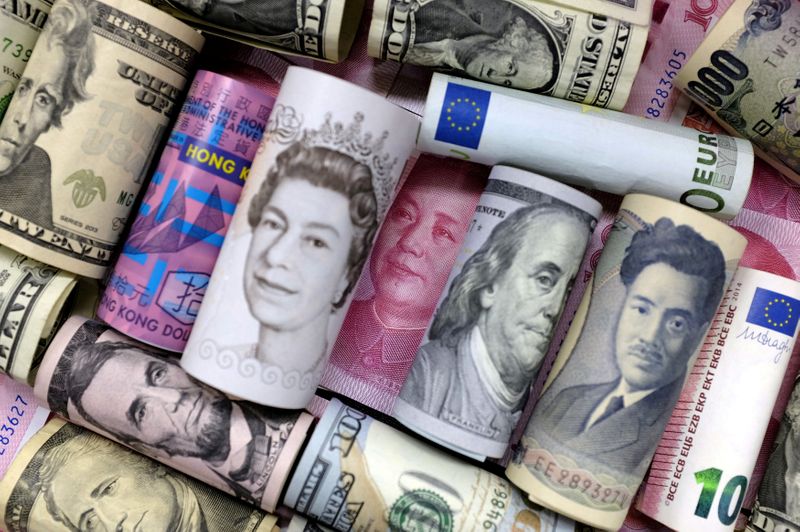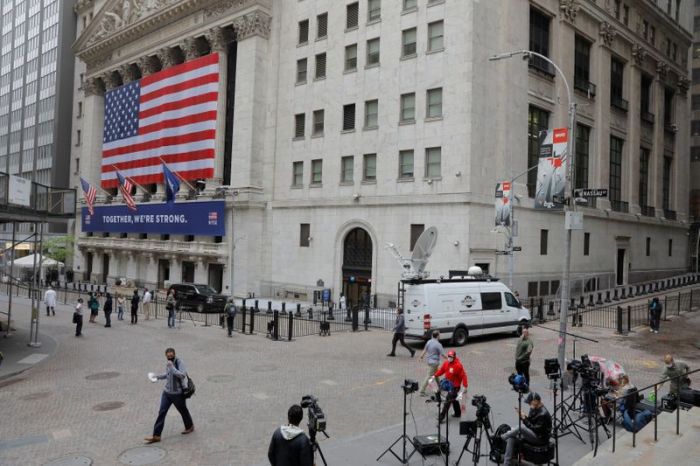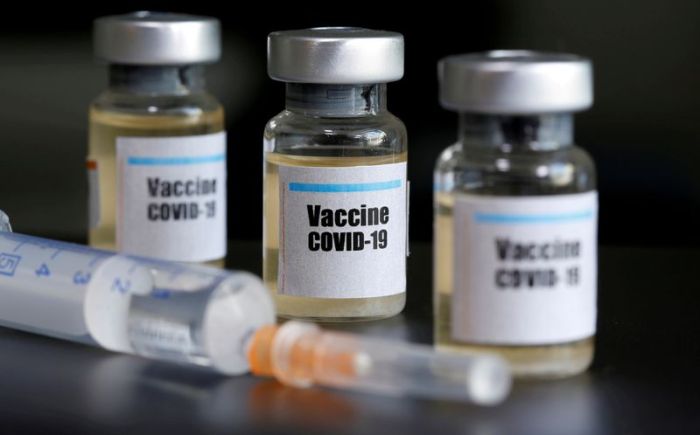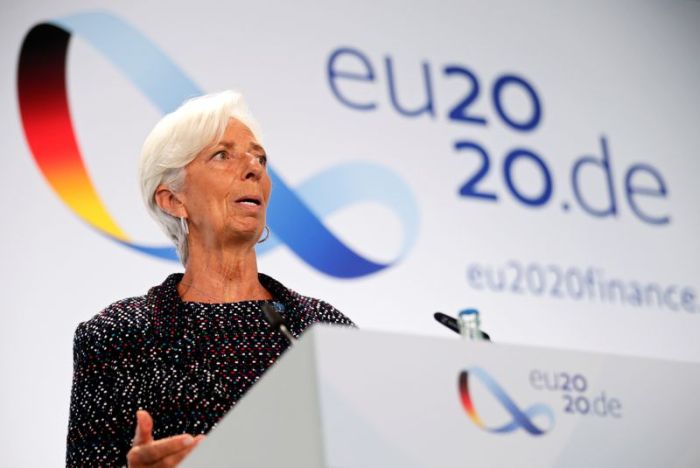NEW YORK (Reuters) – The U.S. dollar index soared to an almost six-week high on Monday and riskier currencies fell as investors sought safety and global stock markets tumbled on fears about rising COVID-19 cases and uncertainty surrounding November’s U.S. elections.
The euro <EUR=EBS>, the Australian dollar and Norwegian Crown <NOK=D3> fell against the greenback, and equities on Wall Street tumbled, as the threat of new pandemic-related lockdowns in the UK and other countries in Europe prompted concerns about the global recovery.
As investors fretted about the ability of the U.S. Congress to reach an agreement for more fiscal stimulus uncertainty was exacerbated by the death of Friday of U.S. Supreme Court justice Ruth Bader Ginsburg, a liberal icon.
President Donald Trump has said he would name his pick to replace Ginsburg this week as he looks to cement a 6-3 conservative majority in the highest U.S. court ahead of the Nov. 3 election.
“This is a classic risk off environment and flight to safety,” said Axel Merk, president of Merk Investments and portfolio manager of the Merk Hard Currency Fund in Palo Alto, California.
“The context is increased election uncertainty. With the supreme court nomination forthcoming this can go in many different ways.”
The dollar – subdued during Asian hours – perked up in Europe’s morning and rose sharply in U.S. trading hours as European stocks sank to two-week lows and U.S. stocks tumbled.
The dollar index <=USD> that measures the greenback against a basket of peer currencies hit its highest point since mid-August and was last up 0.65% at 93.559.
Erik Bregar, head of FX strategy at Exchange Bank of Canada in Toronto said the key trigger for the increased appetite for safety and the dollar’s gain was intensifying fears of another UK COVID lockdown.
“It’s scary stuff that reminds you of March,” Bregar said.
RISK SENTIMENT
The greenback also managed to bounce back from a six-month low against the yen to show a gain against Japan’s currency.
A public holiday in Japan had lightened trading volumes earlier in the day. The dollar last traded at 104.69 yen, up 0.1% on the day, after hitting 104.00, its lowest point since March 12 <JPY=>. This was seen as a key support level by currency traders.
One key issue for the U.S. currency’s direction this week will be whether a slew of Federal Reserve speakers shed light on the U.S. central bank’s new approach to inflation.
Fed Chairman Jerome Powell is due to testify before different congressional committees on Tuesday, Wednesday and Thursday while Fed committee members Lael Brainard, Charles Evans, Raphael Bostic, James Bullard, Mary Daly and John Williams are also making public appearances.
“If Jerome Powell and the rest of the Fed speakers don’t really add more meat to the Fed plans for how it’s going to reach an average 2% inflation I could see the U.S. dollar trading even higher this week,” said Bregar.
The euro traded 0.58% lower against the dollar at $1.1768 <EUR=EBS>. Sterling also fell 0.82% to $1.2809 <GBP=D3> as the dollar gained steam.
The Australian dollar traded down 0.9% against the greenback at US$0.7222 <AUD=D3>, while the New Zealand dollar <NZD=D3> was down 1.4% at US$0.6664.
The U.S. dollar was last up 2.2% against the Crown <NOK=D3> after hitting its highest level against Norway’s currency since mid-July.
(Additional reporting by Gertrude Chavez-Dreyfuss in New York; Editing by Bernadette Baum and Tom Brown)






















